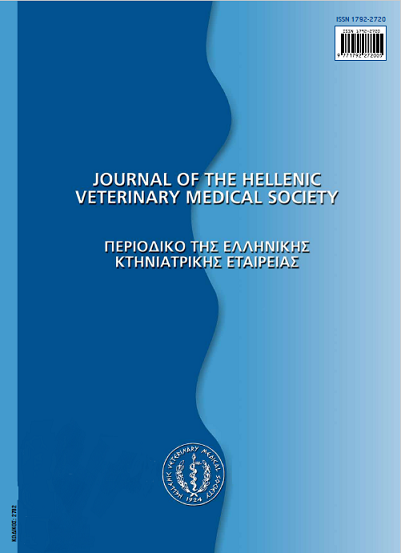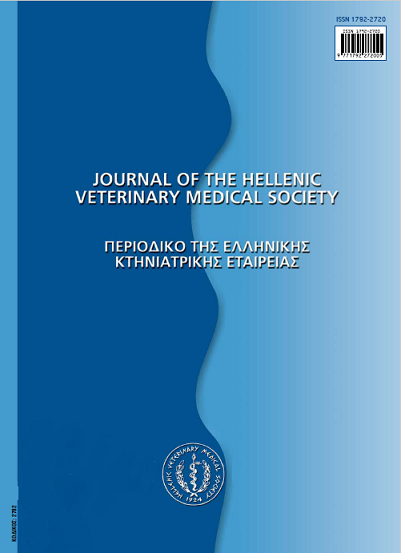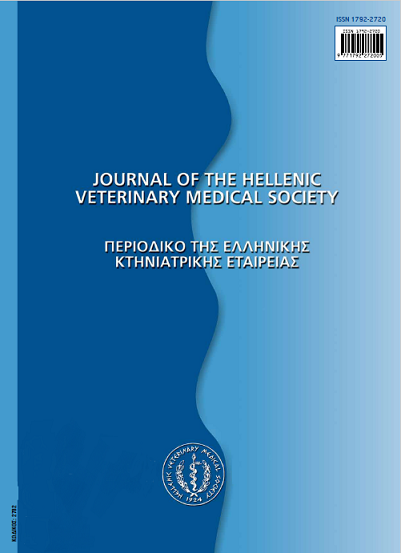Association of Malassezia pachydermatis with the otitic and the normal ear canal of the dogs
Abstract
The purpose of this study was to investigate the presence of M. pachydermatis in otitic and healthy ear canals of the dogs and to test the sensitivity of this microorganism to antifungal agents. A total of 180 swabs, 98 from otitic and 82 from clinically healthy dogs, were collected during the years 1998-2000 in Thessaloniki area (Greece). From all the swabs, smears for direct microscopic examination and inoculation on selective media for bacteria and fungi isolation were made. From the 90 M. pachydermatis isolates, 68 (69,38%) were made from infected and 32 (39,02%) from clinically healthy dogs. M. pachydermatiswas the sole isolate in 20 (20,39%) infected and in 12 (14,63%) non infected dogs. In 48 otitic and in 20 clinically healthy dogs, M. pachydermatis was associated with bacteria as Staphylococcus spp., Pseudomonas spp., Proteus spp. and Streptococcus spp. and fungi as Candida spp. ana Aspergillus spp.. S. intermediuswas isolated from 13 infected and 20 non infected animals. A mixed bacterial flora was grown from 6 infected and 22 clinically healthy animals, respectively, while no growth of microorganisms from 11 otitic and 8 healthy dogs was observed. All Malassezia tested strains (46) were found sensitive to ketoconazole, econazole, miconazole and clotrimazole. Nystatin was found effective to 38 isolates and non
effective to 8.
Article Details
- Come citare
-
BOURTZI-HATZOPOULOU (Ε. ΜΠΟΥΡΤΖΗ-ΧΑΤΖΟΠΟΥΛΟΥ) E., PETRIDOU (Ε. ΠΕΤΡΙΔΟΥ) E., & PSYHOYOS (B. ΨΥΧΟΓΙΟΣ) V. (2017). Association of Malassezia pachydermatis with the otitic and the normal ear canal of the dogs. Journal of the Hellenic Veterinary Medical Society, 54(1), 34–40. https://doi.org/10.12681/jhvms.15216
- Fascicolo
- V. 54 N. 1 (2003)
- Sezione
- Research Articles
Authors who publish with this journal agree to the following terms:
· Authors retain copyright and grant the journal right of first publication with the work simultaneously licensed under a Creative Commons Attribution Non-Commercial License that allows others to share the work with an acknowledgement of the work's authorship and initial publication in this journal.
· Authors are able to enter into separate, additional contractual arrangements for the non-exclusive distribution of the journal's published version of the work (e.g. post it to an institutional repository or publish it in a book), with an acknowledgement of its initial publication in this journal.
· Authors are permitted and encouraged to post their work online (preferably in institutional repositories or on their website) prior to and during the submission process, as it can lead to productive exchanges, as well as earlier and greater citation of published work.










